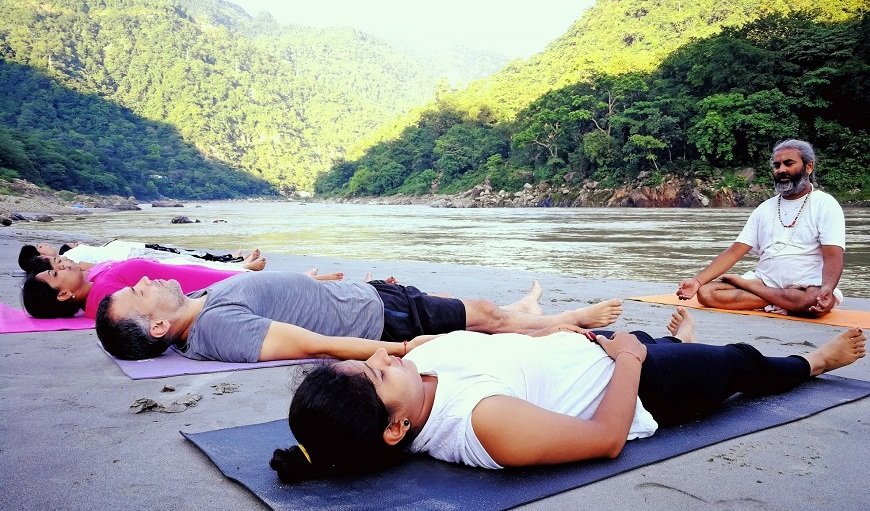Most people who go into yoga teacher training do so with the ambition of becoming a lead trainer one day. Among them, those who do their yoga teacher training in Rishikesh, India usually plan to become a Rishikesh yoga teacher. Rishikesh attracts millions of people every year from all corners of the world. These include yoga teacher training students as well as teachers. Rishikesh has gained the epithet of “Yoga Capital Of The World” and it is not for no reason. The high quality of training that you get in Rishikesh is responsible for this huge inflow of yogis to this town. If you plan to teach yoga classes in Rishikesh eventually, you should do your 500-hour yoga teacher training from here.
New Standards To Become A Lead Trainer
Earlier, you did not mandatorily need 500-hour yoga teacher training to become a lead trainer. You could just 200-hour yoga teacher training and obtain the needful 1000-hours teaching experience to work as a lead trainer. Of course, you could only teach 200-hour yoga teacher training courses. If you were an E-RYT 500, ie, you completed 500-hour yoga teacher training and gained 2000 hours of teaching experience, you could be a lead trainer for 200-hour as well as 500-hour YTTCs. In either case, a lead trainer must have taught 65 of the 200 hours.
The new standards allow only E-RYT 500 yoga trainers to eventually become lead trainers after working as an assistant trainer. A lead trainer needs to have taught 150 of the 200 hours. Whether you teach only 200-hour YTTCs, 500-hour YTTCs, or both, you must be E-RYT 500 to be a lead trainer. These new standards would come into effect from February 2022.
Qualifications And Experience Necessary To Become A Lead Trainer
It is a long journey to become a lead yoga trainer. First and foremost, you must learn yoga and be good at and passionate about it. Once you are, you will have to start training to be a yoga teacher. This path follows the steps as given below:
- It starts with taking a 200-hour yoga teacher training course.
- Then, you must graduate from RYS 200 and obtain a certificate from the school.
- Next, you have to apply for and obtain the RYT-200 credential.
- You will also have to agree to abide by the Ethical Commitment. This consists of the Code of Conduct, Scope of Practice, and Equity in Yoga.
- After that, you have to take a 300-hour yoga teacher training course to complete your 500-hour yoga teacher training. Conversely, you can also do an undivided 500-hour yoga teacher training course. You must do the courses from a RYS 300 or RYS 500 respectively.
- Then, you will have to apply for and obtain your RYT-500 credential.
- You must next complete 2000 hours of teaching experience. Of these, you have to teach at least 500 hours after your RYS 300 or 500 graduation, becoming E-RYT-500.
- You can now join a yoga school as an assistant yoga teacher trainer.
- You will take over as the lead trainer eventually after gaining sufficient experience and proving your expertise.
To continue being a RYT-500 lead trainer, you must maintain your registration with the Yoga Alliance. This requires you to do the following:
- You will have to keep abiding by the Ethical Commitment.
- You will also have to agree to the Policy on the Use of Yoga Therapy Terms under the Yoga Alliance.
- Also, you will have to complete the Continuing Education Requirement every three years of your career.
- Moreover, you will also have to pay an annual fee to the Yoga Alliance to renew your membership and credentials.
Unofficially, you should keep training and practicing to improve your yoga expertise and teaching skills. It will help you become a lead trainer faster.
Advantages Of Becoming A Lead Trainer In Rishikesh
You can become a lead yoga trainer anywhere in the world if you have the dedication and the necessary skills. But, becoming a lead trainer for yoga teacher training in Rishikesh has many extra advantages. Completing your yoga teacher training in Rishikesh will help you become a true yogi and a superior lead trainer here. Once you do, you will enjoy the following benefits:
- Rishikesh sees the biggest crowd of yoga students. Therefore, talking strictly in terms of income, you will flourish here.
- The best students from all over the world come here to learn. Your teaching record would be scintillating.
- You will also be able to meet world-class yogis and yoga trainers from many countries. They come here to teach too.
- You will be able to teach at a reputed school, of which there is no dearth in Rishikesh.
- The environment in Rishikesh is lovely and spiritual. Living here is no different from living in paradise.
- You will meet many like-minded people here. Everyone who comes to Rishikesh is passionate about yoga and spiritual in nature. They will be in Rishikesh for the same reasons as you.
- Because of the high inflow of yogis, the exchange of ideas and information is high too. You will meet people from all walks of life and see the world from many different points of view.
Conclusion
Completing your 500-hour yoga teacher training in Rishikesh is a matter of honor and pride. But, you must be careful to choose the right school and course for this. Doing all the research on your own can be exhausting and confusing. Your best bet is to let BookYogaTraining help you in this regard. We will find the top courses according to your needs and present them to you. You will have the choicest options without moving a finger.









